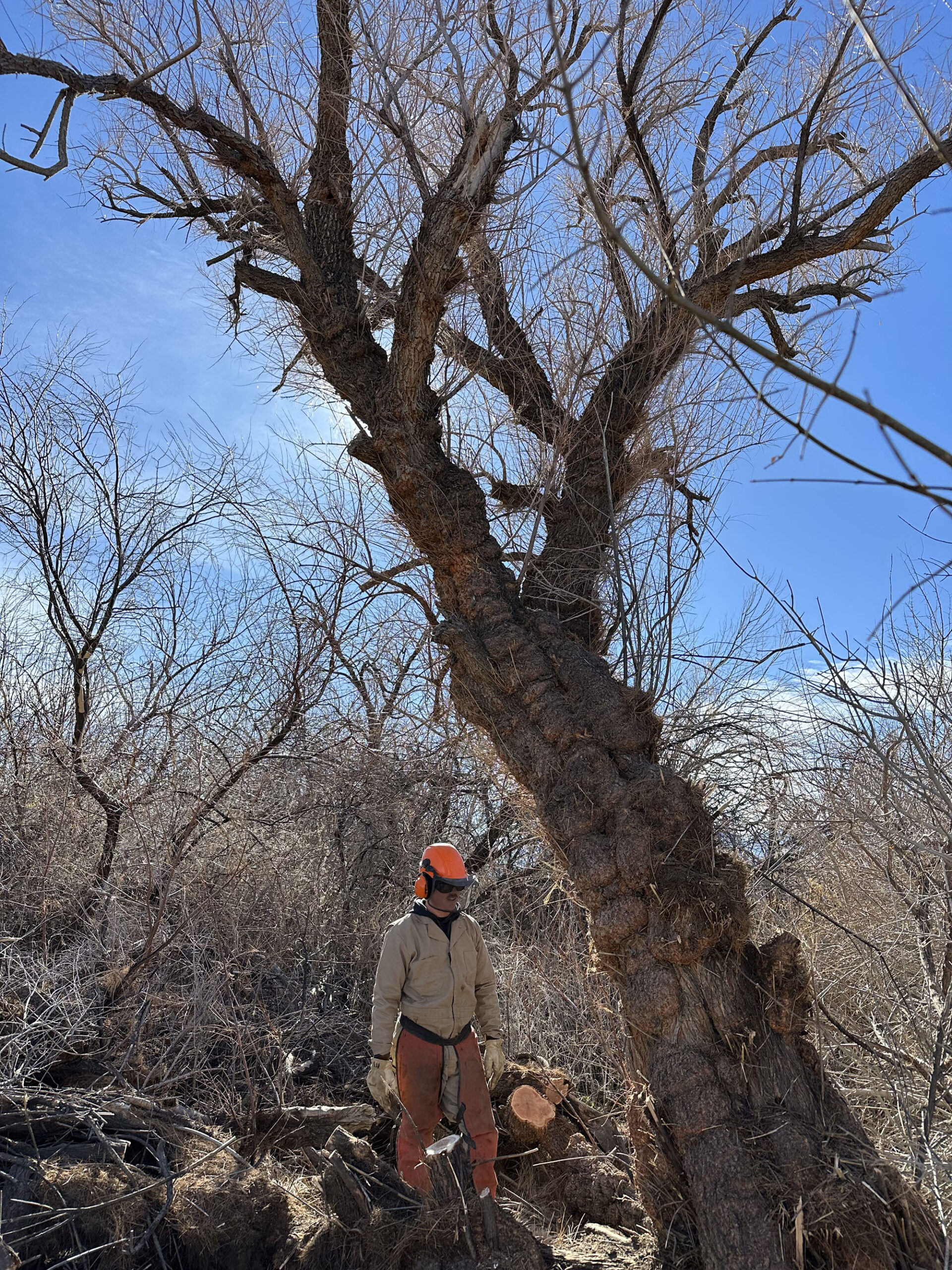Inyo County Saltcedar Control Program
Seasonal Crew – 1 – 5 employees
from October to March
Saltcedar (Tamarix ramosissima) is an invasive deciduous tree with reddish stems, scale-like green foliage, and feathery clusters of small pink flowers. Saltcedar can rapidly spread and come to dominate widespread areas, the tap roots grow more quickly than native species and can lower water tables. If left uncontrolled the salty leaf cast of tamarisk becomes dense enough to create soil conditions that smother native plant species, resulting in monoculture thickets of significantly reduced ecological value and less diverse riparian ecosystems. With funding from LADWP required by the Water Agreement to mitigate these effects, ICWD began a saltcedar control program in 1997 to manage the inevitable spread of this undesirable tree. The goals of our program are to avoid degradation of our vegetation communities and maintain a native riparian ecosystem along the Owens River. To meet these goals, the program has eradicated more than 1000 acres of saltcedar. However, in this heavily managed and altered landscape: we can control the spread but to aim for complete removal valley wide is not realistic.

